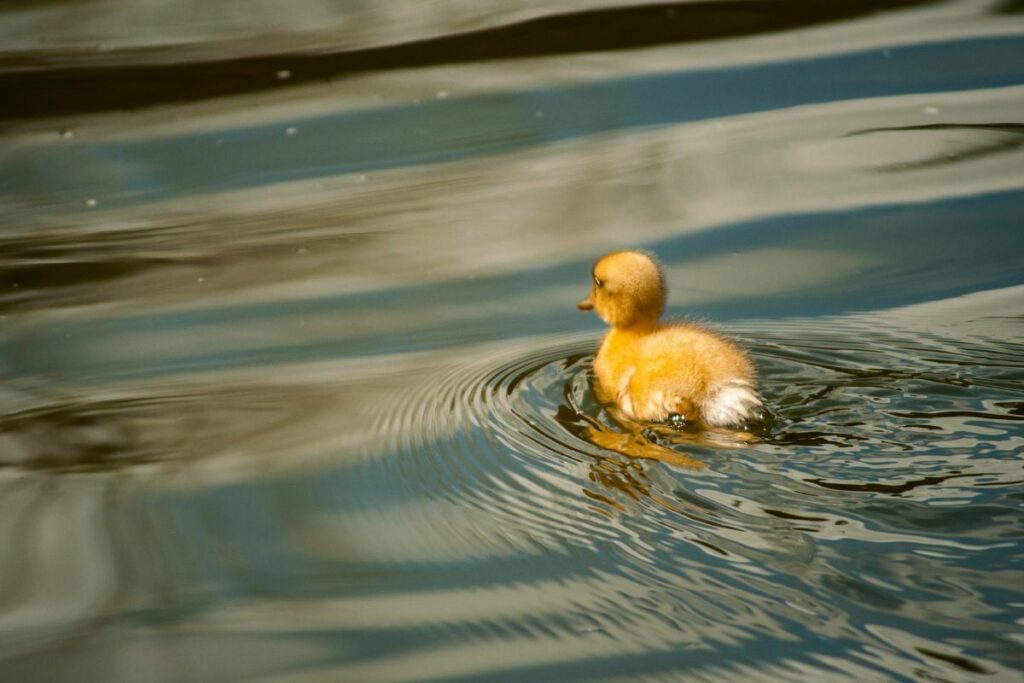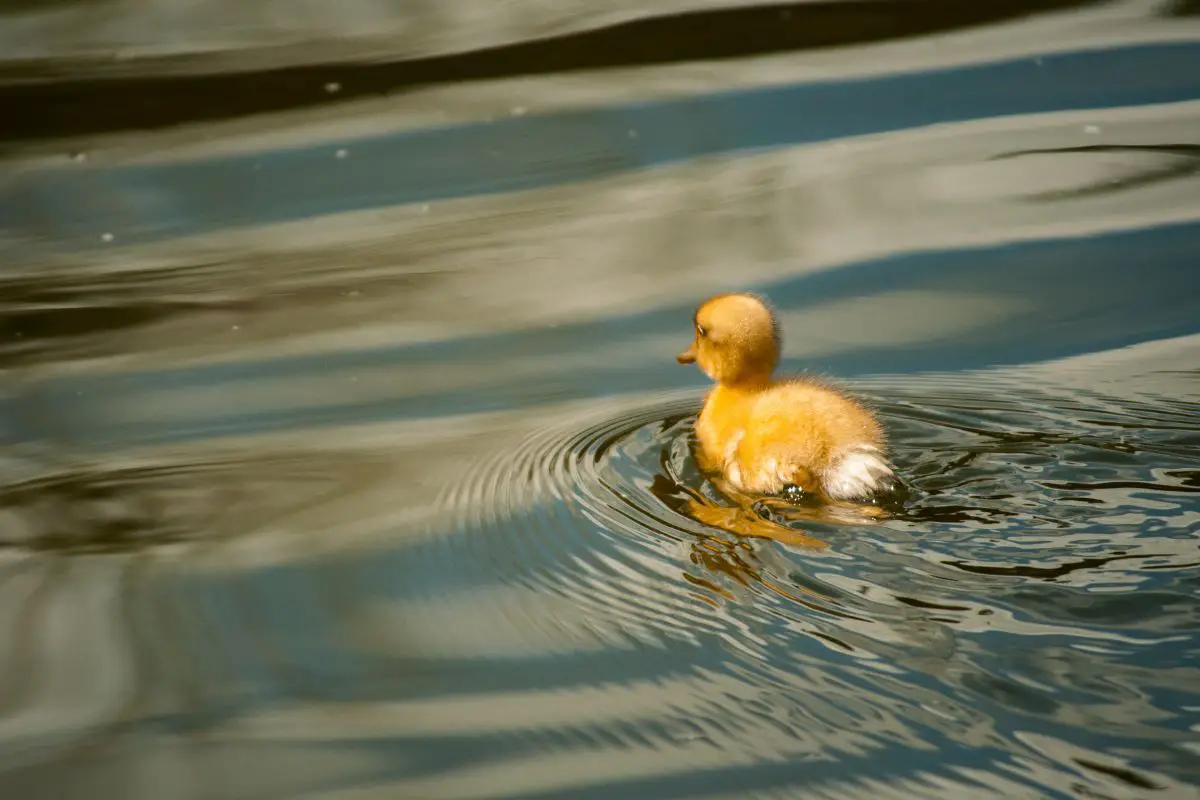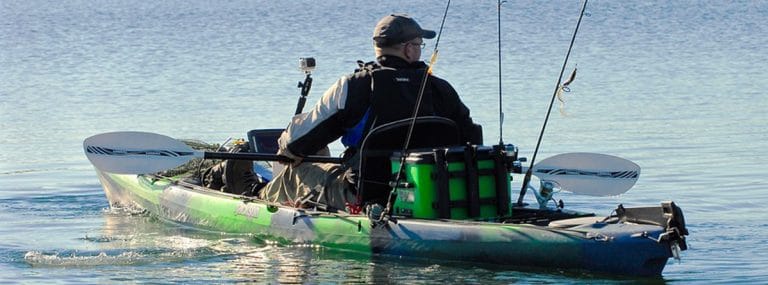Why Are Ducks Yellow? [Explained Simply]
After watching so many movies and cartoons, many people believe ducks are yellow. But in reality, yellow ducks are very uncommon.
Given how rare and adorable they are, you might be interested in learning why some ducks are yellow, and others are not.
So, why are ducks yellow? Some ducks are yellow because of the genes they are born with. Those genes are responsible for the color pigmentation in the duck’s feathers. However, there are some ducklings who are initially yellow; then, their color will change to white when they reach adulthood.
Continue reading to learn more about why some ducks are yellow and the different types of yellow duck breeds.
Table of Contents
Why Are Ducks Yellow?

Most of us are used to seeing yellow ducks in media, so it’s only natural to believe that all ducks are yellow. However, this is not the case as ducks can come in a variety of colors, such as white or brown.
Some duck breeds appear to be completely yellow because they have many feathers that carry a slight tint of yellow. The accumulation of feathers gives them a yellow appearance.
Other duck breeds are genuinely completely yellow in hue. It is due to their genetic heritage. However, these breeds are very uncommon to find in the wild.
There are some duck breeds that are born yellow; then, they change color to white as they grow older.
We’ll break down the reasons why ducks are born yellow in more detail.
The Reasons Why Ducks Are Born Yellow
Here are some of the reasons that explain why ducks are born yellow.
Breed
Ducks, like all other animals, reproduce. Some ducks carry the genes responsible for the yellow pigmentation in their feathers.
One of the most popular duck breeds that are naturally yellow due to genetics is the Pekin duck breed.
The yellow color can also be achieved through selective breeding.
Alteration
Some ducks are initially yellow but change color as they get older. This can happen because their bodies stop producing the pigmentation responsible for the yellow color.
The ducks will change colors to either brown or white.
Where Can You Find Yellow Ducks?
Yellow ducks are usually seen in mountains and, like other ducks, may be found in the ocean, in outflows, and near waterfalls.
Ducks tend to want to live near water. Yellow ducks, in particular, are primarily wild ducks that cannot be found in populated areas.
If you’re interested in finding duck breeds to hunt, here are some recommendations for the best duck hunting kayaks.
The Common Duck Breeds With Yellow Ducklings

Domesticated ducklings are yellow as a result of selective breeding.
The most popular domestic ducks are Pekin and call ducks, and their ducklings are usually yellow. Other prominent duck breeds, including mallard and Muscovy, have partially yellow ducklings.
We’ll discuss the common 7 breeds that have yellow ducklings below:
American Pekin Duck
Pekin ducks resemble what a regular duckling looks like in most people’s minds.
The young ducks are covered in yellow plumage and have orange beaks and feet. Most, though, have black patches that will fade over time as the birds lighten.
As the bird develops, its color changes to a creamy white. The feet, on the other hand, are still bright orange. It has a golden beak that is rather short and pointed.
Male Pekin ducks, like wild mallards, have a patch of wavy feathers near the back.
Aylesbury Duck
An Aylesbury duckling is the mental image we have of a normal duckling. It has soft golden feathers and a pale pink beak.
The male and female Aylesbury ducks are not distinguishable until eight weeks after birth. After molting, you may notice variations, such as the male having 2 or 3 curled tail feathers as opposed to the female.
The adult Aylesbury duck is a big duck with beautiful white plumage and bright orange legs.
Its legs are located in the center of its body. It stands with its underside parallel to the ground, giving the image of a ‘boat-shaped’ body.
It has a long, slender swan-like neck with a big pink beak extending from the head. This is an important quality that will make it stand out among other ducks like the Pekin.
Note that a Pekin duck has an orange beak, but an Aylesbury duck has a pink beak.
Mallard Ducks
Mallards are endemic to most Northern Hemisphere countries and are regarded as the “father” of all domesticated ducks.
Mallard ducklings are not entirely yellow, but they do have a huge portion of it, so they are categorized in this group. The young mallard has a yellow face with black lines around its eyes.
It has a black back with yellow spots that extend all the upwards to its head. It has a completely yellow bottom. This duckling’s beak and legs are black.
The bird’s look changes dramatically as it grows older. A male mallard’s head will change from yellow to shiny bottle green.
It has a white neck that separates the purplish-brown torso from the head. The mature male has greyish brown wings and a light grey belly.
Muscovy Ducks
Muscovy ducks have several color variations, resulting in ducklings with yellow, brown, or a mixture of feather colors.
Muscovy beaks can also be brown, black, grey, pink, or orange, depending on the bird’s color variation.
While Muscovy ducks’ hatchlings can be hard to differentiate from wild mallards and Pekin ducks, adult Muscovy ducks can be recognized from mallard-derived variants by their thick facial skin and larger bodies.
The most noticeable feature of a mature Muscovy duck is its red skin with bumps on the face.
A wild Muscovy’s look is mostly black, with prominent white wing patches and a shiny emerald back. Native Muscovy, on the contrary, can be fully white or black or a combination of the two.
Saxony Duck
A Saxony duckling, similarly to other ducklings, is completely yellow. It has a golden yellow beak and yellow feet. As the duckling grows older, it begins to represent the Silver Appleyard.
Males have the same unique appearance as Mallards, but their colors are unlike every other breed. A blue-gray head and a white-collar ring distinguish the male. It has grey wing markings as well as a brown chest and a white belly.
Females are pale gold with cream lines. One line runs over the eye, while the other runs towards the beak. It features a golden belly with a yellow beak, as well as orange feet and legs.
Magpie Duck
The plumage of the Magpie duckling is pale yellow with a brown tint on the head and rear of the body. Its beak and feet are golden yellow.
The species is named because of its distinctive black and white feathers. It’s mostly white, with two large black spots on the rear and top of the head.
The bird’s black head will normally get streaked with white as it ages, and it may eventually become completely white.
As the bird grows older, the yellow or orange beak turns green. The feet and legs are orange; however, they may seem speckled.
Indian Runner Duck
When Indian Runner ducks first arrived in the United States, they were called “Penguin Ducks.”
In terms of color, the Indian runner duckling is similar to the Pekin duckling. The young duck has a golden body and a vivid yellow beak and legs.
The main distinctive feature is their stance, which makes them stick out.
This breed has by far the most color variations of any domesticated duck breed. The most common colors of Indian Runner ducks are chocolate, black, white, blue, brown, and brownish-green.
Related Questions
Why Are Cartoon Ducks Yellow?
Cartoon ducks are yellow because cartoonists are inspired by the traditional rubber duck style. Most ducklings begin their lives as yellow before maturing into adult ducks, and yellow helps cartoonists maximize the charm of their characters.
Why Are Rubber Ducks Yellow?
Rubber ducks are yellow because they’re designed to resemble young ducklings. Mature ducks have long necks and beaks, yet we rarely associate them with the color yellow. Since rubber ducks are a children’s toy, they are easily recognizable by their yellow color.
Why Does the Color of Ducks Vary?
The color of ducks can vary due to genetics, mutation, pigmentation, and other factors. Several ducks are born yellow and retain the color throughout their lives. It’s because of their ancestors. Their color is determined by their DNA and cannot be changed.
Can Yellow Ducks Fly?
Even though they have wings, yellow ducks cannot fly, nor are they required to. Perhaps some may try and even succeed in flying. Though they cannot fly for long distances like birds, so it’s not really considered flying.
Helpful Resources
Kayak your way to Freedom
- On a budget? Check out the best fishing kayaks under $500 here and the best Fishing Kayaks under $1,000 here. Or Check the best Cheap Kayaks here.
- Going fishing? Here are the best Ocean fishing kayaks, and here are the best River Fishing Kayaks.
- You can also find the best Fly Fishing Kayaks here and the best Bass Fishing Boats here.
- A bit experienced? Check out the best modular kayaks here and the best tandem fishing kayaks here.
- Looking for something special? Check out my favorite Ducky kayaks here.
- Navigate your way with these awesome and beginner-friendly Kayak compasses.
- Going Hunting? These Duck hunting kayaks will give you an unfair advantage!
- Have a need for speed? These motorized kayaks will get you moving.
- Protect yourself from the sun with these Kayak shades, and make your kayak more comfortable with these Kayak seats.
- Keep your feet dry and warm with these superb Kayaking shoes.
- Going Kayaking in cold water? Stay warm with these Kayaking gloves.
- Paddle Less, Fish More with the Best Kayak Motors
- Looking to get a trolling motor on your kayak? Check out the best kayak trolling motor mounts here.
If you like this article, please share it or pin it, you can find the share buttons below. We will really appreciate it ❤️






![Light VS Ultralight Rod for Trout [A Quick Comparison]](https://outdoorskilled.com/wp-content/uploads/2021/09/hand-holding-trout-768x512.jpg)

